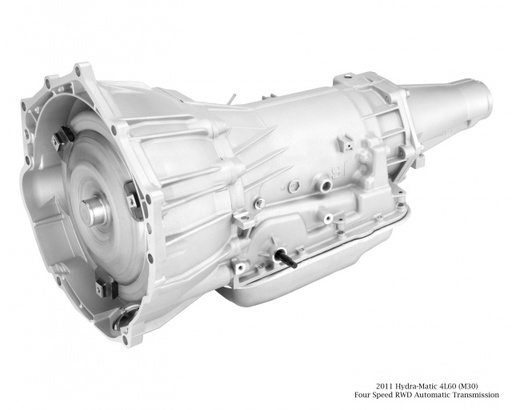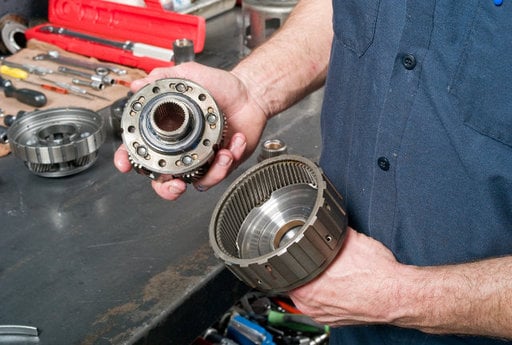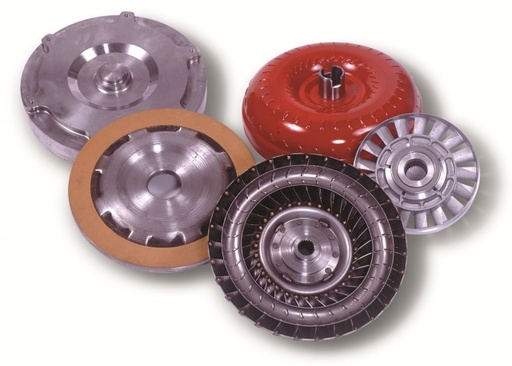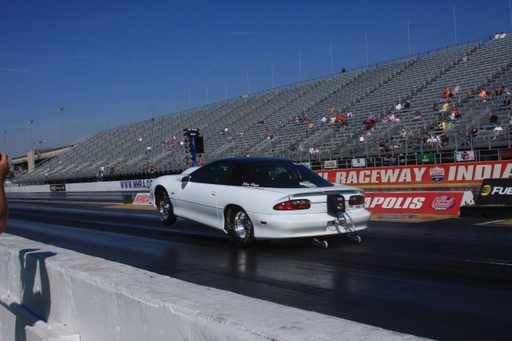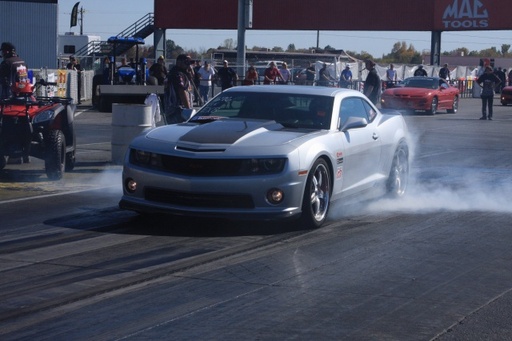
GM’s modern automatic overdrive transmissions are great options in everything from street rods to hard core drag racing machines, and everything in between.
Oh, the mighty slush box. It’s come a long, long way in its journey through GM’s history. It’s steadily evolved from the simple Oldsmobile Hydra-Matic introduced in the 1940’s (the first fully automatic transmission ever) to the simple yet effective style of the 2-speed Powerglide of the 1960’s, and finally into the smooth as silk, but tough as nails electronically controlled 4LXX and 6LXX units that GM enthusiasts enjoy today. They are generally strong, reliable, and upgradeable, all while giving you the benefit of low RPM during highway cruising thanks to the magic that is overdrive.
To find out just what it is that makes the modern GM Auto Overdrive transmissions tick, and to help you choose the right one for your car, we went to the transmission experts at TCI, Hughes Performance, and Gearstar. These guys know the ins and outs of these transmissions, and they filled us in on the strengths and weaknesses of each design, and how they can be modified into bullet proof units that can handle anything you can throw at them.
The 4LXX Family Tree
The 4L60 family of transmissions have been around for quite a while, and started production in the early 90’s. They have been used in almost every rear-wheel drive model that GM has offered since then. Pete Nichols from Hughes Performance offered us this advice on where to find each type of transmission. “The 4L60E began production in 1993, and the later 4L65E and 4L70E are members of the same transmission family as the 4L60E. 4L60E-based transmissions were installed by GM in 4th gen F-bodies, C4 and later Corvettes, and full size passenger cars such as the Caprice. They are also found in fullsize two and four wheel drive trucks, SUV’s, vans, and even light duty trucks and SUV’s such as the S-10 and Blazer.”
Decoding the Transmission:
The names of late model GM overdrive transmissions can seem complicated at first glance with all the different mixes of letters and numbers, but decoding them is really rather easy.Take for example the common 4L60E:
“4”means that it has four forward gears. If there is a “6” like the new “6L80E”, then it is a six-speed automatic.
“L”means that it is longitudinal mounted and runs front to rear, for a rear wheel drive vehicle.
“60”means that it is meant for up to a 6,000 pound gross weight vehicle, and for practical purposes this is also an indicator of how strong the transmission is. The higher this number is (65, 70, 80) the more torque it can handle.
“E” means that it is electronically controlled by an ECU. If there is no “E” at the end, like the “4L60” then it is controlled by a good old TV cable.
He adds, “The 4L80E and 4L85E transmissions began production in 1991. These transmissions were only installed by GM in heavy duty, full-size two and four wheel drive trucks, SUV’s, and vans. And more recently, the 6L80 and 6L90 transmissions have become available in 2010-later Camaros, 2006-later Corvettes, 2008-later Pontiac G8’s, select 2006-later Cadillac models, 2007-later full size trucks and SUV’s, and select 2006-later Australian Holden models.”
The More Desirable Models
Not all of the GM Overdrive Auto transmissions were created equal. The early 4L60’s were pretty much a rebadged 700-R4, and carried over all of its weaknesses. However they did get progressively better, along with newer and stronger models that came after them.
Scott Miller from TCI offered, “The 4L65E and the 4L70E have 5 pinion planetary gears that are stronger than the 3 pinions found in the 4L60 and 4L60E, which makes them a better choice. But it is hard to beat the 4L80E. It doesn’t really have any inherited weaknesses since it’s based on the legendary TH-400.”
Nichols from Hughes says, “The 4L80E transmission family is the strongest GM overdrive transmission ever produced and installed in a standard passenger vehicle platform, and is arguably the strongest overdrive transmission produced by any of the big three. The 4L85E featured a higher torque capacity rating than the 4L80E, but for all practical purposes the entire 4L80E transmission family is on a fairly level playing field when it comes to strength.”
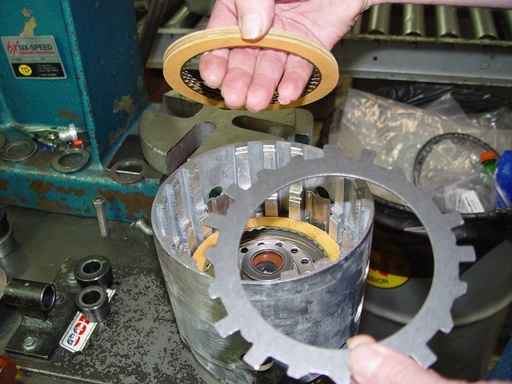
Better clutch packs and quality friction materials are vital in a high performance auto trans. Here we see what goes into TCI’s 4LXX based transmissions.
When looking at the newer six-speed autos, Nichols says, “The 6L90 features a higher torque capacity rating as compared to the 6L80. But really, any inherent benefits or design improvements within this transmission family are negligible. In our opinion the 6L80/6L90 is kind of a weak design, and isn’t really suitable for high horsepower racing use.”
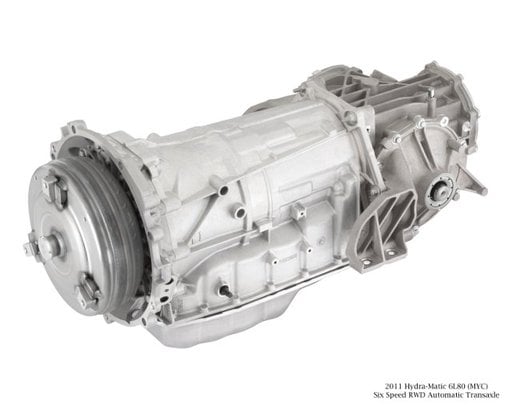
The Corvette’s rear-mounted transaxle is a variant of the 6L80E Transmission, with a different external case set up so that it can be mounted directly to the rear end.
Finding the Weakest Link
Like most OEM components, the GM Auto Overdrive transmissions were designed for everyday use and not to stand up to the rigors of drag racing. Patrick Walczak, a Master Builder from Gearstar had this to say on the inherent weak spots in the GM Auto Overdrives: “All of these transmissions have great potential to be upgraded to handle twice the horsepower and torque they were originally designed for from GM. But their weak spots get uncovered when extra power modifications are added to the vehicle; like turbos and superchargers. The weak links in these transmissions are usually the clutch packs, namely the 1 to 2 power-up-shift, and the 2 to 3 power-up-shift. Those are the problems you’ll see up to about the point when you’ve added about 50% to the engine’s output. If you’re making more power than that, then there are select hard parts, like shafts, drums, and the amount of splines in the clutch hubs that all need to be upgraded.”
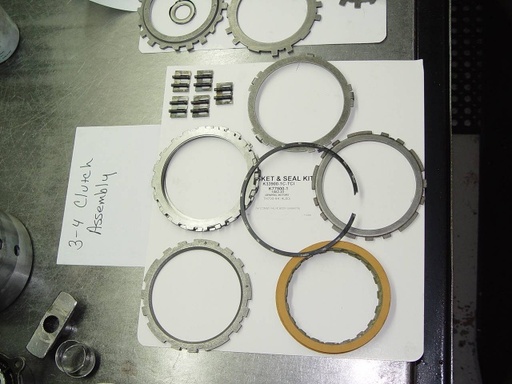
TCI shows us some of the tougher components they use to replace the 3-4 clutch assembly in a performance 4LXX transmission.
Miller from TCI offered this on the 4LXX’s weak spots; “In the 4L60, 4L60E, 4L65E and 4L70E, the 3 to 4 clutch pack and the 3 to 4 input drum assembly are the weaker links. Also, the 4L60 and 4L60E utilize 3 pinion front and rear planetary gears that are really pretty weak. And when you get down to it, the clutch capacity in all of these transmissions can be increased to make them all stronger better able to handle more horsepower.”
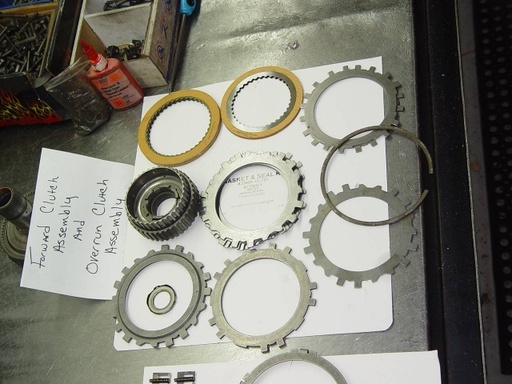
Here TCI shows us the parts that need to commonly be replaced in the forward clutch assembly for a performance transmission build.
Nichols from Hughes broke down the specific things that need changed in each trans family to get the most out of them for us. He says, “The top 5 upgrades in the 4L60E family would be a 2-4 servo upgrade in the form of a Corvette servo or aftermarket billet servo, valve body reprogramming and modifications, an upgraded 3-4 clutch pack, a sleeved and reinforced input drum, an upgraded sun shell, and improved friction materials in general.”
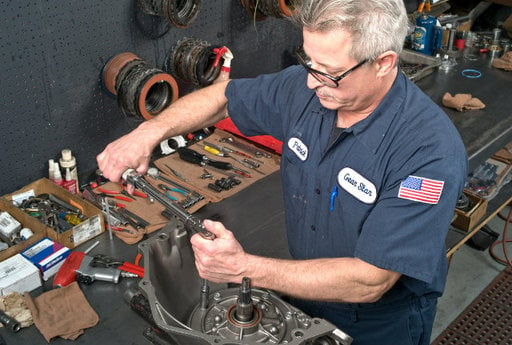
Patrick Walczak is a master builder at Gearstar, who has over 35 years of experience building transmissions. In this picture, Walczak is torquing the bolts on the pump housing at the front of the transmission.
“The 4L80E family actually needs very little in the way of upgrades. Improved friction materials and valve body reprogramming and modifications are always a smart move, though. For high horsepower and racing use the top 5 upgrades would be a billet input shaft, a billet forward clutch hub, a billet intermediate shaft, a modified direct drum with custom 36-element intermediate sprag and races, and a transbrake valve body. These upgrades, along with the right friction materials and proper assembly techniques can easily get you 1,500 flywheel horsepower compatibility,” Nichols explained.
He went on to say, “The key upgrades in the 6L80 family would be improved friction materials, a billet intermediate shaft and hub assembly, and ECM reprogramming. But the best performance upgrade you can install in any of these transmissions is custom high performance torque converter. A properly designed and matched torque converter for a given combination is absolutely critical to maximize the performance potential and drivability of the vehicle.”
Buyer’s Guide
We had the experts from TCI, Hughes and Gearstar give us their best GM Auto Overdrive suggestions for three common levels of performance; a high powered street car, a street and strip machine, and an all-out track dedicated race beast.
450 HP Street Car
- Gearstar: “A 450 horsepower small block would be best suited to a Level III 4L60/700-R4 and should be complimented with either a 3.55 or 3.73 gears depending on the tire diameter. Each of these are available as electronically controlled units, which use a computer to handle the trans’ shift points and pressure-rise control. Going electronic is a more costly endeavor and requires more install time and consideration for where you will place the ECM and wiring harness. But the advantage is programmable shift points and a better shift feel. The non-electrical unit uses a throttle valve (T.V.) cable to the carb or throttle linkage to know when to shift.”
- Hughes: “We recommend our Street/Strip series 4L60E/4L65E/4L70E transmissions for street and mild street/strip applications producing up to 500 flywheel horsepower. This transmission series is also a good choice for light-to-medium duty towing and mild off-road use.”
- TCI: “For powerful street cars up to just over 500 horsepower, we recommend our Street Rodder transmission. It has a an improved performance valve body that gives it a nice firm shift, but not too harsh, which is perfect for street rods.”
600 HP Street/Strip Car
- Hughes: “We recommend our Heavy Duty Street/Strip series 4L60E/4L65E/4L70E transmissions for street and street/strip applications producing up to 650 flywheel horsepower naturally aspirated or with a mild power adder.”
- Gearstar: “A 600 horsepower small block or big block would require a Level IV build spec 4L60/700-R4 to handle that kind of power, or one of our 4L60E Level IV Transmissions if you were looking for an electronically controlled trans.”
- TCI: “At this power level we would recommend our Streetfighter Transmission, which can handle upwards of 775 horsepower. It can be shifted manually or run as a fully automatic, and has our Constant Pressure Valve Body that keeps the clutches from slipping under the types of load a 600 horsepower car can produce.”
800 HP Full Race Car
- Gearstar: “An 800 horsepower application would require a 4L80E, which is an overdrive version of the famous GM Turbo 400 transmission. The 4L80E has a relatively close gear ratio spread that makes it more suitable for high horsepower; 2.48 1st, 1.48 2nd, 1:1 3rd, and a 0.75 overdrive in 4th. The 4L60 has a 3.06 1st, 1.62 2nd, 1:1 3rd, and a 0.75 overdrive 4th gear. Engines that are going to rev higher in heavier vehicles should also compliment it with 4.11 or 3.90 rear gear ratios.”
- Hughes: “We recommend our Street/Strip series 4L80E transmissions for street, street and strip, and racing applications producing up to 800 flywheel horsepower. We recommend our Heavy Duty Street/Strip series 4L80E transmissions for street, street/strip, and racing applications producing up to 1,000 flywheel horsepower. We recommend our Extreme Duty Street/Strip series 4L80E transmissions for street, street/strip, and racing applications producing up to 1,500 flywheel horsepower.”
- TCI: “For a full on race car, the Super Streetfighter would be best, or even a fully manual competition trans if there is one available for their application. We build the Super Streetfighter to handle over 1,000 horsepower, so it would be just fine behind an 800 horsepower engine.”
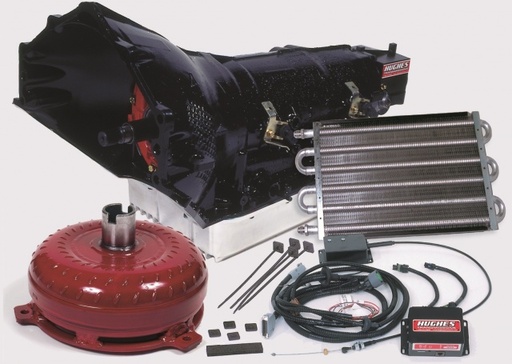
Every member of our panel agreed that the 4L80E is one of the best options for an extremely powerful street/strip car or a full out race car.
undefined
LSX Swaps with 4LXX Automatics
Ok, so you’ve got a stylin’ muscle car that’s ready for modern drivetrain. You’ll be glad to know that the 4LXX transmissions make a simple and generally economical way to add an overdrive trans to your old school ride, and will help you tame those steep 4:11’s you’re running around the streets with. Here’s what our expert panel had to say:
Gearstar: “All of the 4L60 and 4L80 family of transmissions are great options for swaps into retro-rods. A retro-fit is best complimented with a 4L65 or 4L70 LS tailored transmission, which is what they originally were mated to. The 4L85E is also an option, but it’s really more transmission that most street cars will ever need.”
Hughes: “The 4L60E and 4L80E transmission families are excellent choices for retrofitting into muscle cars. The 4L80E is quite a bit larger towards the rear of the transmission and will have some problems fitting the transmission tunnel in some early GM models such as the ’62-’67 Chevy II, but generally fits the mid-size and full-size early GM passenger car platforms without much issue.”
“This is where the majority of our 4LXX units end up. This is another place where our 6X Transmission would be a perfect fit, but an LS swap could be done with a 4L60, 4L60E or 4L80E with our EZ-TCU for the electronically controlled units. Also, our conversion LS style flexplates allow you to use any variant of these transmissions behind an LS application.”
Retro-fitting a 5th Gen Camaro for Serious Track Use
As the new car scent of the 2010 and up Camaros is starting to fade a little, more and more enthusiasts are getting over their fear of modifying their new cars, and are diving into them hard looking for more performance. It’s becoming clear that making big power in these cars is about as easy as falling out of a tree, especially thanks to all of the bolt-on forced induction options out there. So, naturally more and more 5th Gens are starting to show up on the drag strips packing some serious power – more than their stock driveline can realistically handle. So we asked our panel of experts what would be involved in retro-fitting a 5th Gen with a 4L80E for serious drag strip duty.
Gearstar:”In a high horsepower, full race 5th Gen Camaro, this is presently the best way to go for a dependable full-race transmission. It would be a good idea to retrofit a 4L70E or a 4L80 in applications with about 600 horsepower or more. These units have evolved with technology over time and have just gotten better and better. I’m sure that the 6L80E family of 6-speed autos will come of age, but for now they are still in their infancy and haven’t really proven to be a reliable way to transfer a lot of horsepower.”
“If you were looking to swap in a 4L60 or a 4L80 into a 5th gen you would need a new stand-alone computer to get the trans to function properly, since the 6L80E uses an ‘inboard controller,’ meaning the computer is inside the transmission and the car only sends the operating parameter signals (throttle position, road speed) to the trans. You would also need to modify the driveshaft for length and yoke type. Luckily the aftermarket already offers custom crossmembers for this type of application.”
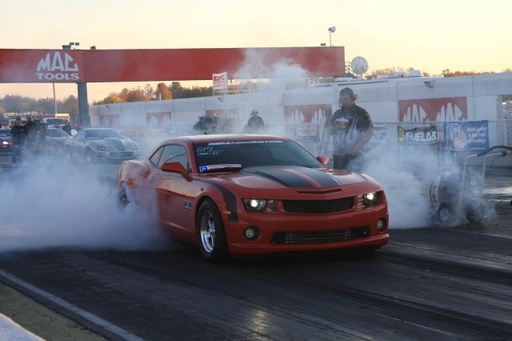
The popularity of the Fifth Gen Camaro Challenge Class that is a part of the LSX Challenge Series has shown that there are more and more 5th Gen owners who aren’t afraid to drag race their new Chevys. TCI, Hughes, and Gearstar all have great options for retrofitting your 5th Gen from a 6L80E to a stronger 4L80E based design for serious dragracing use.
As easy as it is to make insane amounts of power with an LS-based engine platform, the 4L80E quickly becomes the only logical overdrive transmission choice.
“We offer a full manual valve body option on the 4L80E that eliminates the need for an electronic controller. This valve body requires manual upshifting and downshifting. We also have transbrake options in both full manual and automatic shift configurations for the 4L80E. The transbrake option definitely gives the 4L80E a competitive edge in a full race application over any other GM overdrive transmission. As easy as it is to make insane amounts of power with an LS-based engine platform, the 4L80E quickly becomes the only logical overdrive transmission choice, especially in a maximum effort street/strip or full race application.”
TCI: “It can be done and we have actually sold some of our 6X Six Speed Transmissions to individuals that have 5th gen Camaros. It is based off of the GM 4L80E so it fits pretty well. The 6X will handle up to 850 HP, and it will allow them to drive it practically cross country due to the gearing and converter lock up. It is the only 6-speed automatic on the market that will handle that kind of horsepower, and it is fully tunable with our EZ-TCU.”
“If they have a 5th gen with even more horsepower, and they primarily use it to race but still want overdrive, I would use a 4L80E with our controller, or our 4L80E with a full manual valve body with a transbrake.”
The Final Gear
The 4LXX members of GM automatic overdrive transmission family are a great solution to help you “get shifty” no matter what you use your car for. As stock units, they are great for mildly modified cars, and they can even be modified to take a beating from 1,000 plus horsepower engines. Check out Hughes Performance, TCI Transmissions, and Gearstar for more info on how to pick the right automatic transmission for your car.




